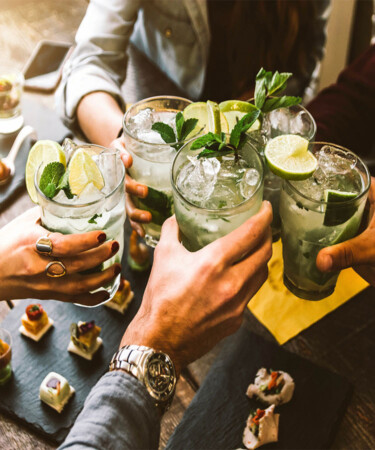The non-alcoholic drinks space has exploded in the past five years, with overall volumes swelling 20 percent in 2023 alone. But while Gen Z (at least those of age to drink) is often touted as the age group most excited about alcohol-free options, it’s a different generation driving the category’s growth.
According to new data from data analytics firm the International Wine and Spirits Record (IWSR), millennials (accounting for those currently between ages 28 and 43) are the driving force behind non-alcoholic drinks sales in the United States. While 22 percent of millennials reported in April 2024 that they consume both alcoholic and non-alcoholic products, only about 13 percent of the overall American drinking public reports drinking both alcoholic and non-alcoholic products. By comparison, 15 percent of Gen Z reported participating in both categories and Gen X reported the same at 11 percent.
The data also suggests that millennials generally aren’t picky about the kinds of non-alcoholic drinks they prefer, as they’re driving growth across NA beer, wine, and spirits. As reported by IWSR Bevtrac consumer research, in April 2024, 61 percent of American non-alcoholic beer consumers were millennials, up from 45 percent the year before. As for non-alcoholic wine, 59 percent of consumers are millennials, while the number jumps to 66 percent in the non-alc spirits category.
“The no-alcohol category as a whole is gaining popularity amongst drinkers in the U.S., with participation rates doubling since April 2023,” says Nastya Timofeeva, Bevtrac’s senior insights manager with the IWSR. “Much of this increase is being driven by Millennials.”
Beyond greater product availability due to the recent category boom, the IWSR points to three reasons why millennials might be consuming so many non-alcoholic products: more occasions to socialize, openness to trying new things, and seasonality.
As argued by the analytics firm, millennials currently display the most positive shift in financial situations of all generations, resulting in them going out more. And because they are spending more time out, members of the age group are subbing in non-alcoholic beverages on some nights. According to the data, almost 50 percent of U.S. millennials abide by this philosophy.
“Millennials skew to heavier usage of beverage alcohol in general when compared to the overall drinker population in the U.S., and [they] are the only cohort with a wider repertoire in 2024 vs 2023,” Timofeeva explains. “So when they do moderate their alcohol consumption, they are doing so from a high level. The fact that Millennial no-alcohol buyers are more likely to be frequent alcohol consumers highlights an overlap between no-alcohol and full-alcohol strength consumers.”
The report also points to millennials’ openness towards new things, like mocktails and Dry January, and cutting back on alcohol for lifestyle reasons as key drivers behind this shift. While just 21 percent of the entire U.S. drinking public reports ceasing consumption for an entire month, approximately 31 percent of millennials claim they abstain.
According to the IWSR, the non-alcoholic beverage industry is predicted to swell at a CAGR of 17 percent from 2023 to 2028. But while the category may continue its growth, if there’s one thing people shouldn’t bet on, it’s consumers replacing booze with non-alcoholic alternatives permanently. Instead, it’s far more likely that drinkers will occasionally swap a non-alcoholic beer for a full-strength brew while out with friends on a Friday night.
This story is a part of VP Pro, our free content platform and newsletter for the drinks industry, covering wine, beer, and liquor — and beyond. Sign up for VP Pro now!
